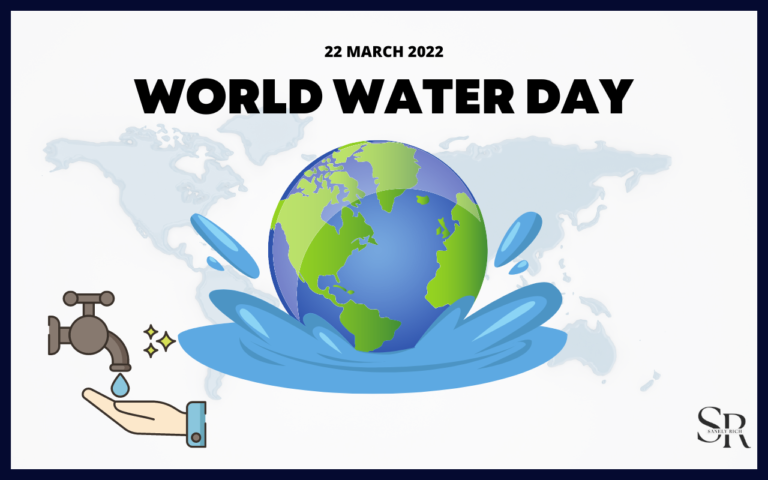Water is the life support system of all the living things on the planet Earth. We all are aware of the formula of water which is H₂O. 71% of the earth’s surface is covered with water. But, let me tell you out of all this water, only 3% is freshwater. And 2.5% of 3% is locked up in various glaciers, ice caps etc. This fascinating thing runs the whole world. From quenching our thirst to growing our food, it’s the water that solves our problem. Water is a basic need for us to survive. United Nations declared 22nd March every year as World Water Day. This day promotes awareness among the society on sustainable use of water. You all might every well aware of the uses of Water, but in this article, we’ll talk about the water crisis.
WHAT IS A WATER CRISIS?
Water plays important role in the development of humans as well as society. Water crisis is scarcity of water where one can’t meet the standard demand. There are many reasons behind the water crisis across the globe, the few are, climate change, population explosion etc. Firstly, the demand for freshwater is rapidly increasing, while the supply for the same is decreasing. At the present time, most governments are ignoring the crisis. If they keep a blind eye, the future will be very bad despite being warned by many big research institutions. A report from world wildlife says two-thirds of the world’s population might face water shortage by 2025.
Water scarcity is one of the most complex and costly sustainability issues of our time. We explore solutions in markets, regulation and innovation: https://t.co/wCzL9wdRQ4 pic.twitter.com/kRBMBaGtTK
— Morgan Stanley (@MorganStanley) March 19, 2022
Which part of World did the water crisis first started?
Water crisis induced by climate change is costing lives in Gulu region right now, children are dying in large numbers— yet they literally contributed nothing to global warming
Please join us & provide clean & safe water, and save lives. Thank you💦🙏🏽https://t.co/JYdTFirEcB pic.twitter.com/boC39QUHgg
— MulindwaMoses (@mulindwa_guy) March 21, 2022
The city of Cape Town in South Africa faced a water crisis in 2017-18. The crisis was so severe that at one point the city faced the prospect of ‘day zero’. No one was allowed to flush or take a shower more than once a week. The story of Cape Town is an inspiring one – from crisis reaching ‘day zero’ to now dams with over 100% capacity. This just shows that there is hope. Although, South Africa is not the only country with water stress. The list is long and includes rich countries like Qatar to poor countries like Eritrea and Zimbabwe.
The water crisis may also lead to escalation and dispute against different nations. The building of the Grand Ethiopian Renaissance Dam by Ethiopia is already facing resistance from Egypt. Ethiopia is building Africa’s largest hydropower project on River Nile. Building this dam will give Ethiopia power to control the flowing of water. Hoping, this dispute settles fast. Because of frequent such cases, this is not the last dispute, the disputes will keep arising.
World’s Water Footprint
World's Water Footprint: 9,087 billion cubic meters per year.
The Water footprint of a nation is the total volume of freshwater that is used to produce the goods and services consumed by the people of the nation.
More on: https://t.co/cBVzDEZzqE#Worldwaterday pic.twitter.com/Rdo1ccsN1I
— Sanely rich (@SanelyRich) March 21, 2022
Steps Taken by countries to Save Water
It is important to conserve water in a variety of ways. Public as well as government must take steps in order to avoid a crisis. One should adopt both the old traditional and modern ways to save water. Old traditional ways like building wells, ponds etc to save rainwater. Modern methods like rainwater harvesting, using state of art technology while watering fields, using in industries etc.
Saudi Arabia, Israel etc are pioneers in water conservation and management. About, 60% of Israel’s land is desert, but they have been doing great with their water level management. They have founded drip irrigation technology. Because drip irrigation technology uses 30-50% less water.
Hard not to be impressed by #Israel’s incredible contributions to the world 🌎 on #WorldWaterDay!
This clip is from #Dubai where Israeli company @watergen_official has developed tech to literally create water from thin air. 🇮🇱 💦
— Emily Schrader – אמילי שריידר (@emilykschrader) March 22, 2022
While saving water in our day-to-day activity does count but it only contributes to 3% of the world’s water footprint, while agriculture accounts for over 80% of water footprint. A single bottle of carbonated drink requires over 175 litres of freshwater the majority of which is not reusable. Similarly, all of the agricultural products have a much higher water footprint. This can be solved by better managing all of these products that can be prepared in much less freshwater. The need of the hour is a water management strategy i.e. growing and producing in the right place.






